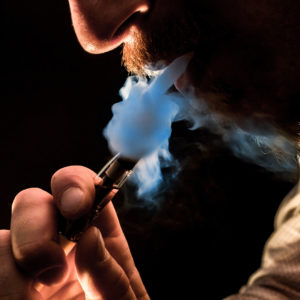The anti-tobacco crusade—one of the left’s favorite holy wars—has hit a wall. Though great strides have been made in reducing the rate of cigarette smoking, about 15 percent of U.S. adults continue to smoke and smoking-related illnesses cause nearly 500,000 deaths a year and $300 billion in medical costs annually. That’s separate and apart from the $156 billion hit businesses take each year in lost productivity.
But President Donald Trump, Congress and the Food and Drug Administration now an opportunity to make breakthroughs in reducing the rate of smoking and vastly reducing the ills associated with nicotine addiction by reversing a number of perhaps well-intentioned but ultimately misguided Obama era policies. The key is to embrace a “harm reduction” approach to public health policy.
Tobacco harm reduction recognizes that some folks find quitting their addiction to nicotine nearly impossible. But the emergence in recent years of e-cigarettes offers a popular way to satisfy those cravings that is much safer than traditional combustible cigarettes. The Royal Society of Physicians, one of Britain’s most respected medical organizations and sponsor of the groundbreaking 1962 study on smoking’s relation to cancer, recently concluded e-cigarettes are 95 percent safer than their traditional cousins. Their counsel: if you’re going to smoke, why not reduce risk by switching to a safer alternative?
What renders e-cigarettes a safer option lies in the physical process itself. The negative health impacts from traditional cigarettes arise from burning and inhaling smoke into the lungs. Smokeless tobacco or “heat not burn” tobacco products don’t combust, and thus sidestep nearly all of the health risks posed by traditional cigarettes.
You would think American public health officials would see the same benefits their British cousins do, but the Obama administration instead clamped down on e-cigarettes, with agencies from the FDA to the Centers for Disease Control and Prevention even to the Department of Housing and Urban Development crafting policies to kill the industry, which is largely composed of thousands of small and medium-sized American businesses. Come August 2019, a set of new regulations are scheduled to come into effect that would vaporize 90 to 99 percent of the e-cigarette market overnight. When that happens, we should expect thousands upon thousands of former smokers will revert back to cigarettes.
President Trump has shown a tendency to bring out-of-the-box solutions to tired policy fights. Soon, he will have to decide how to deal sensibly with the issue of smoking, where innovation is required for solutions that balance economic and health considerations. To help the new administration analyze this issue, the R Street Institute this week published a white paper detailing eight tobacco harm reduction policies for the federal government.
First, seize the huge opportunity presented by low-risk nicotine products. Practically, this means making appointments and providing direction and funding to shepherd the THR approach through a host of federal agencies. Just as importantly, the report recommends canceling the FDA’s “deeming rule” before it destroys the U.S. vaping market. Instead, change the Tobacco Control Act predicate date to Aug. 8, 2016 for nicotine products that do not contain tobacco and replace the product-by-product authorization regime with a standards-based regime for low-risk nicotine products. This approach would reduce individual risk, promote innovation and ensure low-risk nicotine and tobacco products remain an attractive alternative to smoking.
The report also calls for creating new labels that better inform consumers about relative risk. If e-cigarettes are described and categorized as posing the same harm as traditional cigarettes, consumers won’t understand the opportunity to switch to a much safer alternative. The goal should be to restore honesty and candor to public-health campaigns and endeavor that, by 2020, 75 percent of Americans understand that e-cigarettes, smokeless tobacco and heat-not-burn tobacco products are “very much less harmful” than traditional cigarettes.
The 2009 Tobacco Control Act mandated new tobacco and consumer-nicotine products pass a “public health test” demonstrating that their presence on the market would not negatively impact public health. But the burden of proof is set so high that it acts as a largely insurmountable barrier to products much safer than cigarettes, while safeguarding the thousands of cigarette products already on market. The report urges federal regulators to stop using the public health test to protect the cigarette trade.
The study also calls for refocuses tobacco science on the public interest, not bureaucratic expansion. Among other things, congressional oversight hearings should be held to fairly examine the state of tobacco science.
Finally, as the administration has signaled its commitment to re-examining international trade structures, the report recommends that the United States challenge vapor and smokeless prohibitions under World Trade Organization rules. The fight for a safer alternative to traditional cigarettes should not be confined to the United States. We should fight WTO agreements that unjustifiably prohibit low-risk nicotine products across the globe.
If only a few of these recommendations are successfully taken up by Congress and the Trump administration, it will constitute a major improvement over the public health policy practiced over the past eight years. Tobacco policy is long due for reform; what better time than now?

